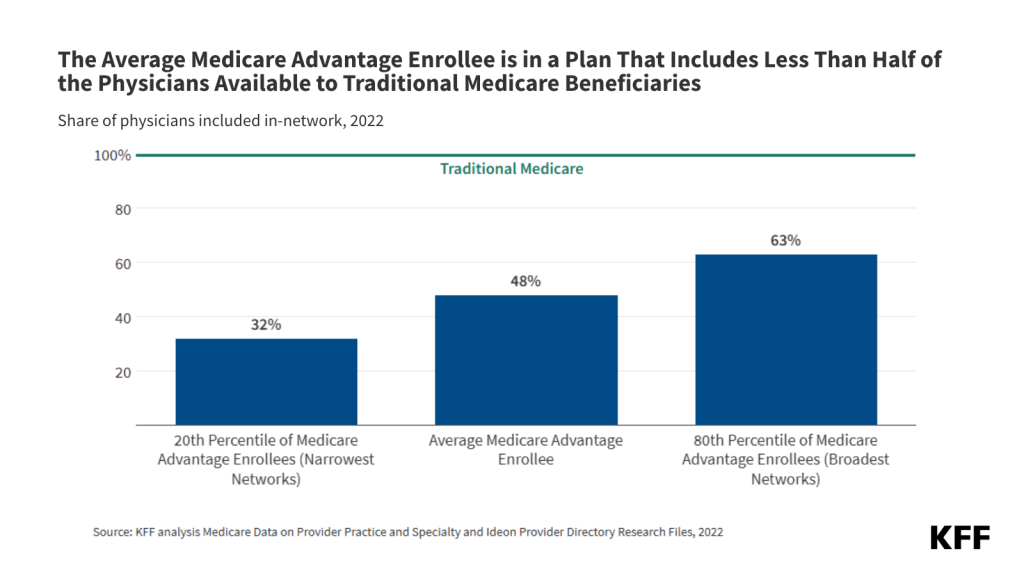Medicare Advantage Provider Networks Limit Enrollees to About Half of the Physicians in Their Area That Are Available to Beneficiaries in Traditional Medicare, on Average
With Medicare’s annual open enrollment period underway, a new KFF analysis finds that Medicare Advantage enrollees, on average, had access to just under half (48%) of the physicians in their area who were available to people enrolled in traditional Medicare.
The finding illustrates a key tradeoff for beneficiaries in choosing Medicare Advantage. Such plans can be appealing to beneficiaries because they offer extra benefits and cap out-of-pocket costs without the need for supplemental coverage. But the plans’ provider networks, which help insurers manage utilization and costs, also restrict enrollees’ choice of physicians, hospitals, and other providers without paying additional cost. Changes in provider networks can be disruptive for patients when their hospitals and physicians are no longer in-network.

In the analysis, KFF researchers document how much networks vary across plans by using 2022 Medicare Advantage provider directories to assess the share of physicians available to plans’ enrollees as a share of all physicians that submit claims for providing care to traditional Medicare beneficiaries, by county, plan characteristics, and physician specialties.
Among the key findings:
- The one-fifth of Medicare Advantage enrollees in plans with the narrowest networks had in-network access to just about one-third of all physicians that were available to people in traditional Medicare. Conversely, the one-fifth of Medicare Advantage enrollees in plans with the broadest networks had in-network access to more than two-thirds of physicians available to beneficiaries in traditional Medicare.
- The size of Medicare Advantage provider networks varies widely both across and within counties, which can make it hard for beneficiaries to decipher which option is best for them when choosing a plan.
- The share of physicians available to Medicare Advantage enrollees varied by specialty. Generally, larger shares of outpatient medical and surgical specialists were in Medicare Advantage plan networks than primary care physicians.
Prior KFF research shows that beneficiaries value being able to choose their own doctors, but the vast majority of the nation’s nearly 69 million Medicare beneficiaries do not compare coverage options or switch plans.
This year the Centers for Medicare & Medicaid Services has a new tool on the online Medicare Plan Finder that allows beneficiaries to enter up to five of their preferred providers to more easily determine if they are in a plan’s network. Users can sort plans in their area by whether a “must-have provider” is in network. The Medicare open enrollment period began Oct. 15 and runs through Dec. 7.